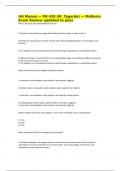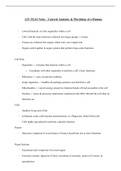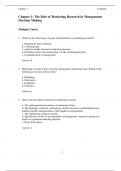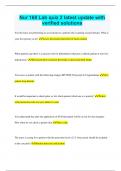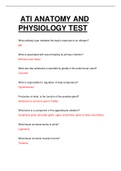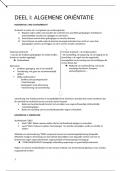Exam (elaborations)
UH Manoa — PH 420 (M. Tagorda) — Midterm Exam Review updated to pass
- Course
- Institution
UH Manoa — PH 420 (M. Tagorda) — Midterm Exam Review updated to pass What is the basic idea behind diffusion theory? A. People are more likely to change their behavior if they intend, or plan, to do so. B. People are rational actors who do 'mental math' when deciding whether or not...
[Show more]
